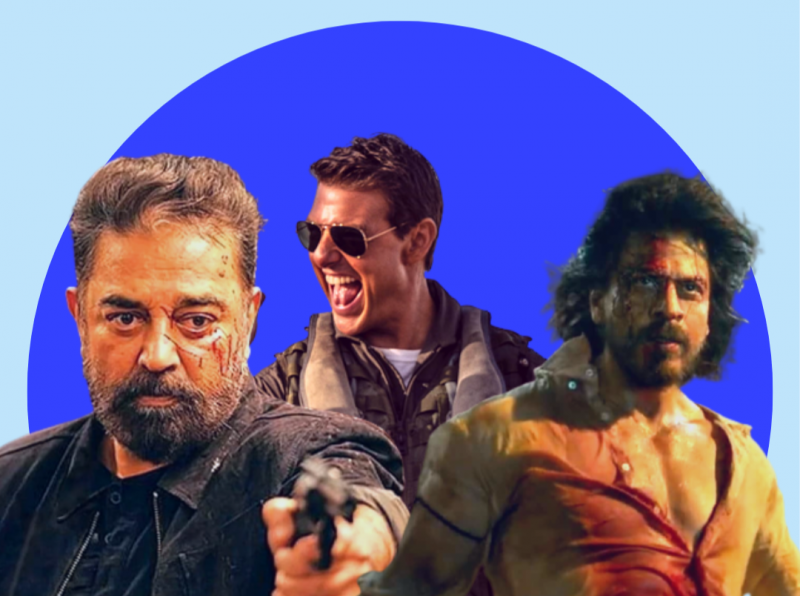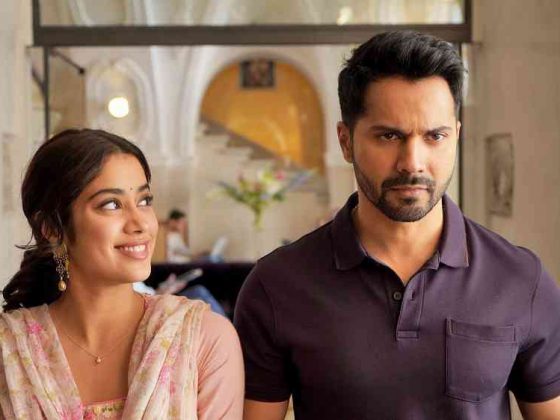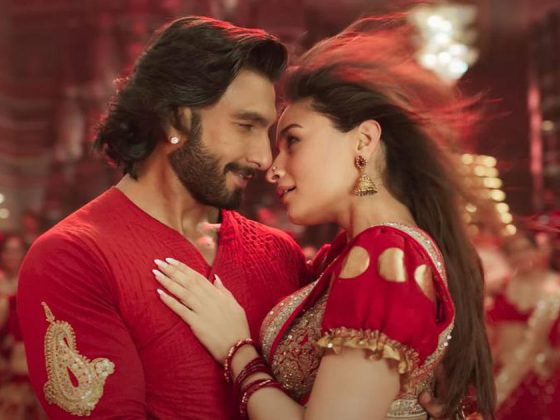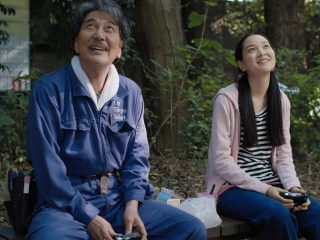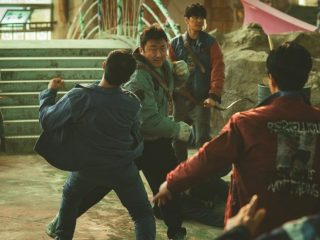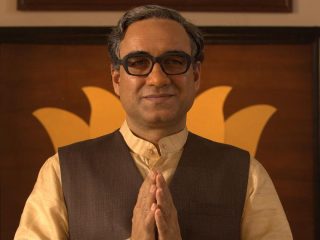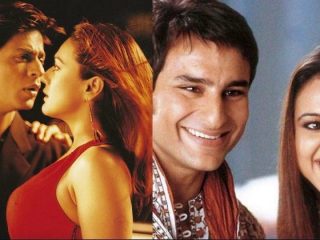Ever since the dawn of human civilization, there has always been a fascination towards heroic figures for humans either in the form of stories, paintings, etc. This fascination has led to worshipping heroes which in turn caused a domino effect in human culture for a millennia. When filmmaking took the centre stage of all art in the wake of 20th century and current century, heroic figures took a different spin in the form of ‘superstars’.
A term popularized by Artist Andy Warhol, ‘superstars’ are mere mortal actors who performed unimaginative stunts and antics on celluloid showcasing a spectacle for the audience. At this point where the climate of films mostly involving comic book superheroes, the superstar films had a great resurgence in recent years cementing the fact that the stars haven’t lost their fuel yet. Let’s delve deep into what makes hits and duds in recent superstar films.
The Inception & the Fall:
The phenomenon of ‘superstars’ emerged from the days of theatrical play during the renaissance age of the 15th century. Actors like Richard Burbage, Will Kempe etc. who acted in William Shakespeare’s plays staged in globe theatre were among the recorded stars in history. To narrow it down in terms of Indian Context, there were actors who were assigned the title of ‘Rajapart’ in theatre plays. ‘Rajapart’ is the equivalent of a ‘Superstar’ who draws the audience into the theatre for the play and no matter what kind of roles (leading/supporting) their charms and talent lure the audience into making the play a successful one.
When theater took a transition into film in the USA, the first films starred famous actors at that time but weren’t credited. In 1910, production houses like Independent moving picture company credited their stars for the first time which led to a great footfall, and in 1930’s the star system became a common practice across Hollywood.
As quoted by Louis B Mayer, the co-founder of MGM Studios the ‘star system’ can be described as – “A star is made, created; carefully and cold-bloodedly built up from nothing, from nobody. All I ever looked for was a face. If someone looked good to me, I’d have him tested. If a person looked good on film, if he photographed well, we could do the rest… We hired geniuses at make-up, hair dressing, surgeons to slice away a bulge here and there, rubbers to rub away the blubber, clothes designers, lighting experts, coaches for everything—fencing, dancing, walking, talking, sitting and spitting.”. Actors like Warren William, Marilyn Monroe, Audrey Hepburn, Marlon Brando, Frank Sinatra, etc. became the icons they are now because of this ‘star system’.
Things took a turn in the 1970s, when the image of the star was pushed to become relatable and provide more acting chops.
According to Author Virginia Luzon-Angado in her book “Harrison Ford: Masculinity and Stardom in Hollywood”, she talks about how his transformation from humble carpenter to a Superstar was used by filmmakers and Hollywood PR contributed to his image of ‘boy-next-door’. Here in India, a similarity in this ‘boy-next-door’ image can be seen with Superstars Rajinikanth, Amitabh Bachchan and Shah Rukh Khan.
While the Superstars films made a great run in the box-office, things took a different turn after the success of ‘The Dark Knight’ and ‘Marvel Cinematic Universe’ in early 2010s, superhero films particularly CBM films successes overshadowed a lot of Action Superstars films. The Latex clad Superheroes with battling CGI monsters attracted kids and family audiences a lot leading to a diminishing amount of blockbuster films targeted to young and matured adults unlike the 80s and 90s.
The Pandemic:
There were certain films of superstars which tasted some success amongst the CBM Movies climate until the pandemic took a toll on the world and cinema. The pandemic saw the closure of cinema halls and the OTT boom became a thing. Most of the major studios released their films directly in OTT platforms and people became exposed to films/series from different countries and genres. Pandemic made a big impact on the psychology of humans making them yearn for a shared happiness amidst the grief and loss. Despite the tedious protocols and safety measures, theatres saw a good footfall restoring a sense of normalcy in the world. While the release of films like Thalapathy Vijay starrer “Master”, Allu Arjun starrer “Pushpa”, etc. gave a reset to the dormant industries of the respective regions still the glorious pre-pandemic days of superstar films didn’t see the light of the day
“Now, that’s what we call a comeback”
The world is experiencing a post-pandemic phase; dwindling commerce; back-to-back flops; superhero fatigue. Amidst this, two superstars from different sides of the world decided to release their films in 2022 since their last movies’ release four years ago. One was Tom Cruise from the West, and another was Kamal Hassan from the east. Both revived their 36-year-old existing properties and gave a new light to it. Tom Cruise’s dream project of making a Top Gun sequel has been on the cards for many years and when the right time & technology came, he grabbed it and finished the film in 2020.
But its release got delayed, and Paramount demanded an OTT release for the film. Tom Cruise’s adamant decision to release the film in the cinema halls blocked Paramount’s decision, and it eventually hit the silver screens on 27th May 2022. Similarly, the breakout director Lokesh Kanagaraj’s dream of directing a film with Kamal Hassan saw the light despite its delays in shootings. “Vikram” released on silver screens on 6th June, 2022. Both the films, surprised the audiences and revived the spirit of summer blockbusters (as well as the movie going experience in general) that had dwindled over the past couple years.
Both “Vikram” and “Top Gun maverick” saw a great action avatar facelift to the actors and boost to the cinema hall commerce. In Jan of 2023, another superstar came into the spotlight after his four-year hiatus into the screens with “Pathaan” and it revamped the Hindi Masala genre. Now, that’s what we call a comeback. A superstar comeback!
Capitalizing the mid-age demographic
In his recent Spotify podcast, eminent film critic Baradwaj Rangan talks about the reasons why Rajinikanth Films don’t belong to a particular but more like the star being the genre creating the “Superstar Rajini genre” films. Similarly, no one comes to a mission impossible movie expecting what “Ethan Hunt will do? “But the question of “What Tom Cruise is gonna do new?” blurring the lines between real and reel life personalities.
This aspect defines the star-power driven films and unlike Superhero CBM Films, Superstar films easily have a minimum guarantee of driving their loyal fanbase to the theatres in the first week but what’s more challenging is the sustainability in the following weeks. According to famous news media reports, the reason American Audience rarely prefers to go to the movies is that the casual audience i.e., the middle-aged demographic pretty much can’t track the progress of these IP driven safe play blockbusters. The astounding success of “Vikram”, “Pathaan”, “Top Gun Maverick” and “Dead Reckoning” lies in capitalizing this demographic to great use. The films aforementioned contain a complete ending giving a sense of satisfactory escapism unlike most Latex-clad superhero blockbusters ending with cliffhangers.
Right use of Nostalgia:
Superstar comeback films come up with a baggage of nostalgia to satisfy the loyal fanbase. While “Top Gun: Maverick” and “Pathaan” had on-the-face references to the star’s previous works, “Vikram” had subtle references to Kamal’s decades-spanning filmography. It isn’t just about placing references and easter eggs to just satisfy the existing fanbase. But what these three movies achieved was in establishing their own flair and style while at the same respecting the legacy of the yesteryear films, thus giving a subtextual commentary on the coexistence of modern and traditional filmmaking. This brought a gratifying experience for the fandom of the respective stars.
What’s even more interesting is the fact that both “Vikram” and the 2019 Rajini-starrer “Petta” remain fanboys of the respective stars, making it more of a self-indulging experience. While these films provided the best use of nostalgia, films like “Beast”, “Varisu” etc. didn’t make a great use of the same and relied only on the old antics of the star rather than forming a distinctive language.
Reminiscing Youthfulness:
The biggest compliment that “Top Gun Maverick”, “Mission: Impossible 7”, “Vikram” and “Pathaan” received from the audience was in how it made them relive their gleeful days of youth. These films acknowledged how these superstars are getting old, and thus presented the stories in a meta-way through cheeky remarks. “Despite their acknowledgement, they still go on to deliver their unstoppable attitude throughout the whole film making the audience cathartic that age is just a number and it’s all in our mind” says Aarya Shah, aspiring screenwriter and admin of ‘A Boy At the Cinema’ page. This celebrated spirit seemed to be missing in the recent superstar Harrison Ford film – “Indiana Jones and the Dial of Destiny”, which a lot of mid-age demographic audience pointed out. While Indy 5 acknowledged the octo-generian hero’s deteriorating age, it only succeeded halfway in showing Indy’s swashbuckling spirit. With its post-modernist dialogues that appeared nakedly reverse engineered, it hampered the escapist sense of awe inspiring experience Steven Spielberg’s older Indy films curtailed.
De-glamourisation of Stars:
The popular Spotify Podcast ‘Lori: I hear you’ co-writer, Aspiring Director and Admin of ‘Nothing But Films’ Page, Rohitendra Chatterjee, when asked about his thoughts on this resurgence of superstar films, elaborated on the role of social media in constructing the superstar image. He says “I think one of the best and worst things that have come out of the internet is the de-glamourisation of the superstar. Without social media, there would be an aura of mystery around them which would make them a star and not a human being. Characters were also crafted surrounding the personality of the star. The only times you’d probably see this superstar figure was in movies and not social media. So, everyone had a version of their star in their heads. Now private lives are public and once people know their stars are as fallible as them, the looking up aspect of stardom fades into obscurity”. Adding to this point, social media truly made us question whether superstars in the cinematic landscape would exist in the future.
But things haven’t been the same ever since the 60s. When the MGR-Sivaji clash came to an end, every media outlet wrote how “there won’t be any superstars like them anymore”. Ditto for the Rajini-Kamal and Ajith-Vijay clash in the social media era. We might speculate a lot, but the fact remains that as long as the yearning for escapism that the shared communal experience in a theater brings, superstars and superstar-driven films will prevail. Superstars will continue to rise from the ashes.

